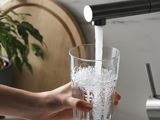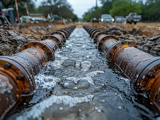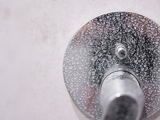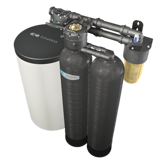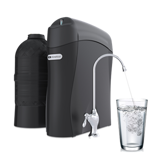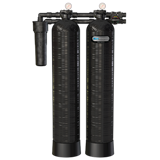Learn More About Saginaw, MI Water
Kinetico Water Systems has been providing water treatment solutions for people in Saginaw, MI for over 30 years. Residents of Saginaw get their water from both private wells and city water. The water supply in the city is treated with chemical disinfectants to meet state and federal minimum regulations for contaminants. After it is treated, the water must travel through the water distribution system before it reaches your home for household use.
Schedule A Free Water Test.
Improve Your Water Today!
Simply fill out the form below and your local water expert will reach out soon to schedule your free, in-home, water test.
We respect your privacy as we respect our own.

Why Drinking Water Matters
Water is part of your daily life. You use it to cook, clean, make coffee, and—most importantly—stay hydrated. But not all water is the same. Tap water can carry unwanted things like:
Common Water Problems In Saginaw, MI
These water problems are common to Saginaw, MI water, but they may not affect your home or business.
Water in Saginaw, MI comes from the municipal water supplier, The City of Saginaw Water Department, and private well water systems. Even if you have city water, your water can still have some level of contaminants. It can also still cause water problems in your home. To learn more about Saginaw's city water, you can review the 2024 Water Quality Report from The City of Saginaw Water Department. In Saginaw, we most commonly see water problems like hard water, groundwater contamination, and high bacteria levels. If you have these or other water problems, schedule a water test to learn how you can treat your water problems.
Hard Water
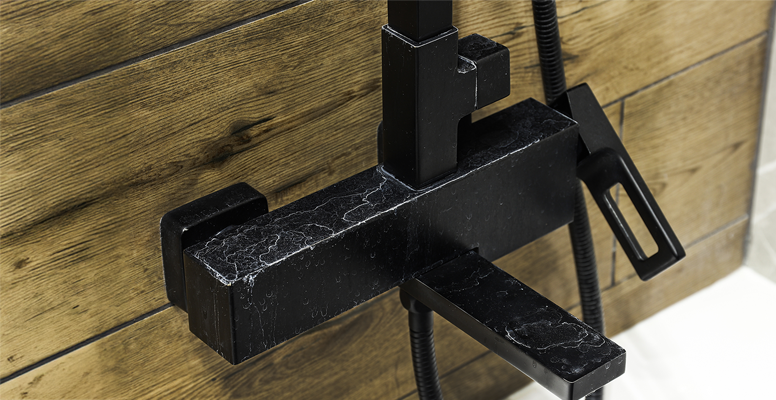
When water travels through the ground, it picks up minerals like calcium and magnesium. These minerals dissolve in water and make water hard. Hard water can cause problems for both you and your home. If your water is even slightly hard your water-using appliances can be damaged by scale buildup shortening their lifespan. Hard water also stains sinks and showers and leaves hard water spots on dishes and silverware. It can also affect you. Your skin can dry out when you bathe and wash your hands. Your hair can become dull and brittle, causing it to tangle and become more difficult to manage.
Water hardness is measured in grains per gallon. If your water measures at one grain per gallon of hardness, it is hard. Water 10 grains per gallon or more is considered very hard.
Water Hardness Table
| Grains per Gallon (gpg) | Milligrams per Liter (mg/L) | Water Classification (Water Quality Association) |
| <1.0 | <17.1 | Soft |
| 1 - 3.5 | 17.1 - 60 | Slightly Hard |
| 3.5 - 7.0 | 60 - 120 | Moderately Hard |
| 7.0-10.5 | 120 - 180 | Hard |
| 10.5 + | 180 + | Very Hard |
If you suspect that your water is hard, the best solution for you and other homes in Saginaw may be a Kinetico Premier Series Water Softener. A water softener replaces the hardness ions in hard water with softer sodium ions. You will see and feel the benefits of soft water for you and your home. Learn more about how water softeners work and the benefits of soft water.
Contact Your Local Water Expert Today
Find Out If Your Water Is Considered Hard!
Groundwater Contamination

Groundwater contamination occurs when harmful substances seep into the soil and reach underground aquifers, which supply water to public wells. Sources of contamination include agricultural runoff, leaking underground storage tanks, septic system failures, and improper disposal of industrial or household chemicals. Fertilizers and pesticides used on farms can leach through the soil, while older fuel tanks may corrode and release toxins like benzene into the water. Natural elements such as arsenic or radon can also dissolve into groundwater from surrounding rocks. Since groundwater moves slowly, contaminants can remain in the water supply for years, challenging detection and cleanup.
If you suspect that your water could be contaminated, the best solution for you and other homes in Saginaw may be a Kinetico K5 Drinking Water Station With VOC Guard. Our flagship reverse osmosis system uses a semi-permeable membrane to remove contaminants, along with a variety of filters that tailor the unit to your families water needs. Learn more about the Kinetico K5 here.
Volatile Organic Compounds (VOCs)

Volatile organic compounds (VOCs) can enter drinking water through a variety of sources, including industrial runoff, improper disposal of chemicals, agricultural activities, and even leaking underground storage tanks. Common VOCs include chemicals like benzene, toluene, and trichloroethylene (TCE), which are used in solvents, fuels, and manufacturing processes. These contaminants can seep into groundwater or surface water sources when industrial waste or spills are not properly contained. Additionally, old landfills or hazardous waste sites that aren't adequately lined or monitored can leach VOCs into water supplies. Because VOCs evaporate easily, they can travel through the air and also be deposited into water bodies during rainfall.
Contact Your Local Water Expert Today
Find Out If Your Water Is Affected By Contaminants
Water Treatment Solutions For Saginaw, MI
Additional Information About Your Water
Explore The Quality Of Your Water
Visit Our Updated Resource Center
Where Your Water Is Sourced From

